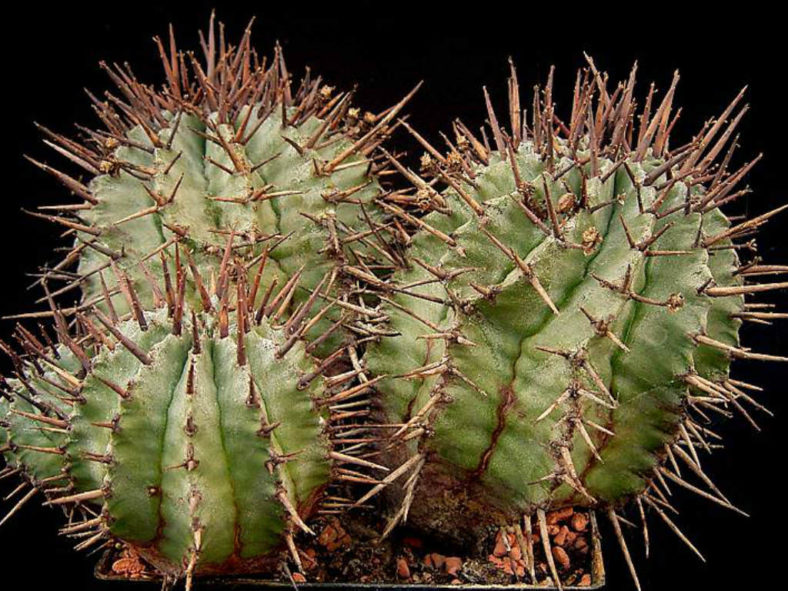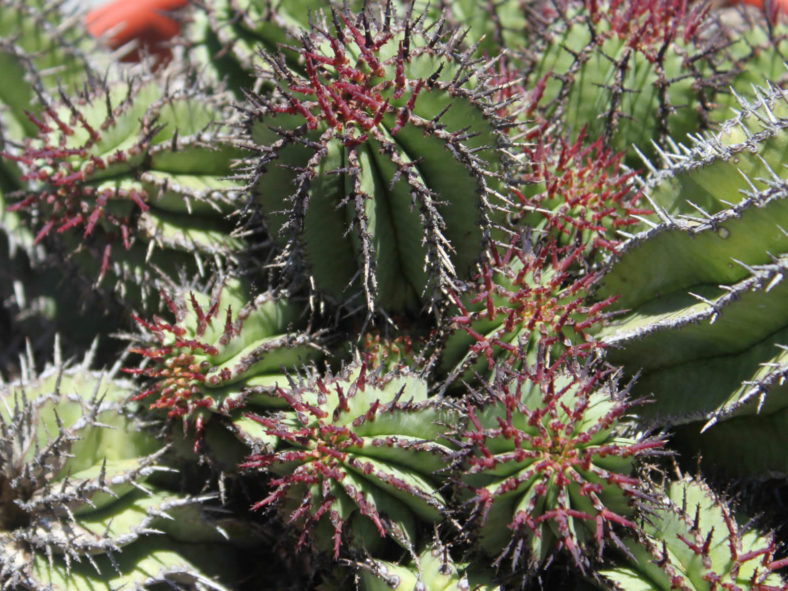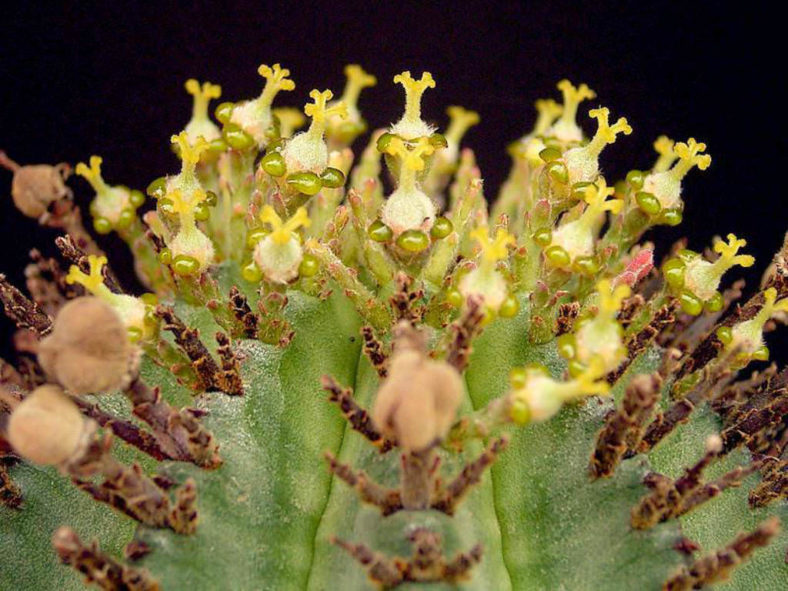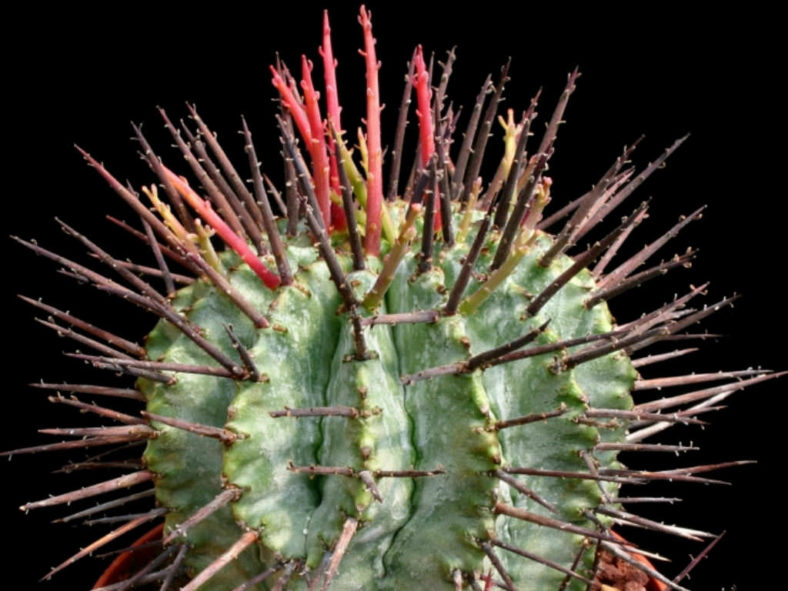Scientific Name
Euphorbia horrida Boiss.
Accepted Scientific Name
Euphorbia polygona Haw.
Common Name(s)
African Milk Barrel
Scientific Classification
Family: Euphorbiaceae
Subfamily: Euphorbioideae
Tribe: Euphorbieae
Subtribe: Euphorbiinae
Genus: Euphorbia
Etymology
The specific epithet "horrida" (pronounced "HOR-id-uh") means "rough, bristly, shaggy" and refers to the spiny appearance of this species.
Origin
Euphorbia horrida is native to South Africa. It is not recognised as a separate species and is treated as a synonym of Euphorbia polygona.
Description
Euphorbia horrida is a clump-forming succulent with erect, cylindrical stems with 10 to 20 flattened, often wavy ribs armed with orange or grey, spine-like structures. It offsets from the base, forming a dense clump with age. The stems can grow up to 4.9 feet (1.5 m) tall and 6 inches (15 cm) in diameter. The stem color varies from blue-grey to grey-green. The spine-like structures are dried remnants of the cyathia stalks. They are rigid and can reach up to 1.6 inches (4 cm) in length.
The solitary cyathia are greenish yellow and appear along the ribs at the stem apices in summer.

How to Grow and Care for Euphorbia horrida
Hardiness: USDA hardiness zones 9b to 11b: from 25°F (-3.9°C) to 50°F (10°C).
Euphorbias are very easy to care for. These plants require a little pampering to become established, but once they are, they are self-sufficient. More die from overcare and watering than from neglect. Euphorbias need well-draining soil and ample sunlight. They are not particular about soil pH, but cannot tolerate wet soil. Unlike most succulents, Euphorbia does not handle long periods of drought well. It may need weekly watering during the summer. Water whenever the top several inches are dry. Water deeply, but avoid letting them sit in wet soil, as this can cause root rot. Add some organic matter or fertilizer to the planting hole. Feed with a half-strength fertilizer monthly if you are growing them in containers or your soil is poor.
These succulents can be grown from seed, but the seeds can be difficult to germinate or even find. They are usually propagated by cuttings. This can be tricky because of the exuding sap. Rooting hormone is recommended with Euphorbia. They tend to grow problem-free, but there are a few pests and diseases to be alert for.
See more at How to Grow and Care for Euphorbia.
Links
- Back to genus Euphorbia
- Succupedia: Browse succulents by Scientific Name, Common Name, Genus, Family, USDA Hardiness Zone, Origin, or cacti by Genus
Photo Gallery
Click on a photo to see a larger version.


